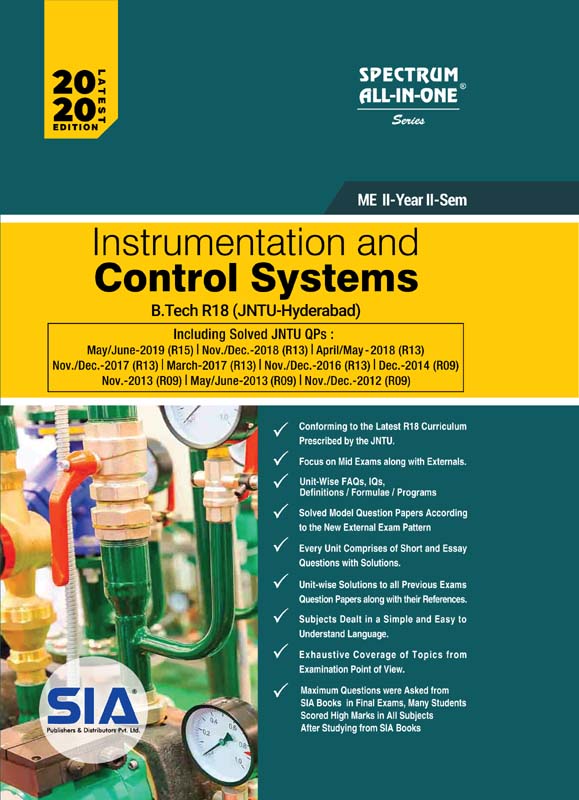

Note: Please check your Spam or Junk folder, in case you didn't receive the email with verification code.
SYLLABUS
UNIT-I
Introduction to Instrumentation Definition – Basic principles of measurement – Measurement systems, Generalized configuration and functional description of measuring instruments – Examples. Static and dynamic performance characteristics – Source of errors, Classification and elimination of errors. Measurement of Displacement Theory and construction of various transducers to measure displacement – Piezo electric, Inductive, Capacitance, Resistance, Ionization and photo electric transducers, Calibration procedures
UNIT-II
Measurement of Temperature Various principles of measurement – Classification: Expansion type: Bimetallic strip – Liquid in glass thermometer: Electrical resistance type: Thermistor, Thermocouple, RTD: Radiation Pyrometry: Optical pyrometer: Changes in chemical phase: Fusible indicators and liquid crystals. Measurement of Pressure Different principles used- Classification: Manometers, Dead weight pressure gauge, Tester ( Piston gauge), Bourdon pressure gauges, Bulk modulus pressure gauges Bellows – Diaphragm gauges. Low pressure measurement – Thermal conductivity gauges – Ionization pressure gauges, Mcleod pressure gauge.
UNIT-III
Measurement of Level Direct methods – Indirect methods – Capacitive, Radioactive, Ultrasonic, Magnetic, Cryogenic fuel level indicators – Bubbler level indicators. Flow Measurement Rotameter, Magnetic, Ultrasonic, Turbine flow meter, Hot-wire anemometer, Laser Doppler Anemometer (LDA). Measurement of Speed Mechanical tachometers – Electrical tachometers – Non-contact type-Stroboscope Measurement of Acceleration and Vibration Different simple instruments – Principles of seismic instruments – Vibrometer and accelerometer using this principle-Piezo electric accelerometer.
UNIT-IV
Stress Strain Measurements Various types of stress and strain measurements – Selection and installation of metallic strain gauges-Electrical strain gauge – Gauge factor – Method of usage of resistance strain gauge for beading compressive and tensile strains – Temperature compensation techniques – Use of strain gauges for measuring torque – Strain gauge Rosettes. Syllabus Measurement of Humidity Moisture content of gases, Sling psychrometer – Absorption psychrometer, Dew point meter. Measurement of Force, Torque and Power Elastic force meters, Load cells, Torsion meters, Dynamometers.
UNIT-V
Elements of Control Systems Introduction, Importance – Classification – Open and closed systems – Servomechanisms – Examples with block diagrams – Temperature, speed and position control systems – Transfer functions – First and second order mechanical systems
 No Preview is available for this book
No Preview is available for this book

 Get 100 instant uPoints on the purchase of Rs.100 or above for each order.
Get 100 instant uPoints on the purchase of Rs.100 or above for each order.
CategoriesEngineering

Format EPUB

TypeeBook